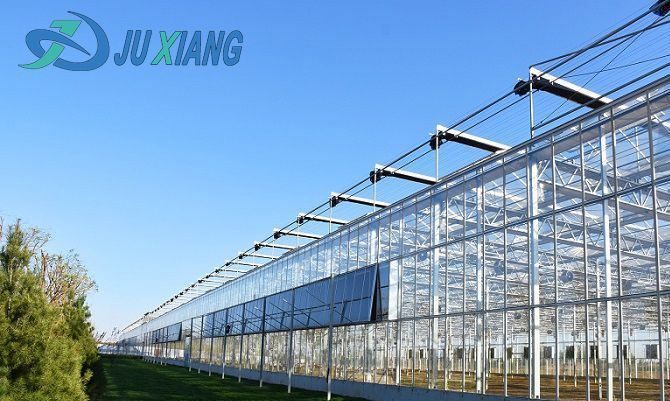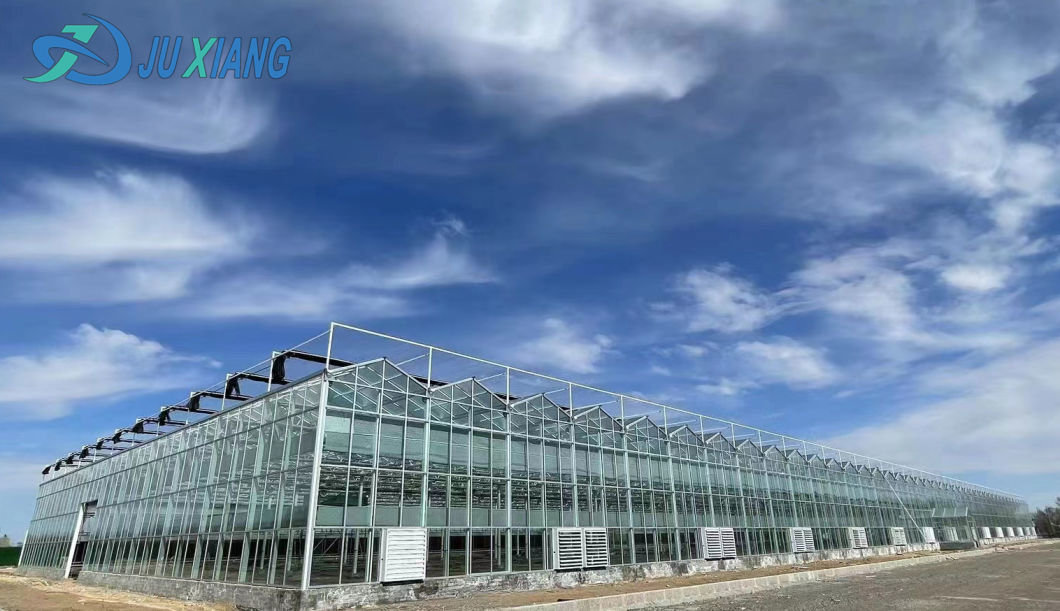Product Description
One of the key features of the vegetables Farm Film Greenhouse is its irrigation system. This system uses
drip irrigation or other watering methods to deliver water directly
to the roots of the plants, reducing water waste and improving
water use efficiency.
In addition to water, the greenhouse also provides optimal growing
conditions for the plants by controlling the amount of nutrients
they receive. This is done through the use of hydroponic systems,
which deliver nutrient-rich solutions directly to the roots of the
plants.
The Tomato and Cucumber Farm Film Greenhouse also incorporates
advanced lighting systems to mimic natural sunlight and promote
photosynthesis. These lights can be adjusted to provide the right
amount of light at different stages of plant growth.
Overall, the Tomato and Cucumber Farm Film Greenhouse offers a
highly efficient and sustainable way to grow these crops
year-round, regardless of weather conditions. With its advanced
technology and optimized growing environment, it allows farmers to
produce high-quality, consistent yields while minimizing resource
use and environmental impact. |  |

Film greenhouses are constructed using thin film as a covering
material.The main structure of this kind of greenhouse is not only
simple and practical, but also the cost is relatively low, which is
very suitable for the cultivation of vegetables and other crops.
The top of the film greenhouse can usually be covered by
double-arch double-film or single-film, while the surrounding can
be covered by different materials such as double-film, single-film,
PC board or glass according to the needs, so as to realize the
automatic control of the greenhouse environment. Its high light
transmittance, good thermal insulation performance and strong aging
resistance make the film greenhouse provide a stable and suitable
growth environment for vegetables, thus having a positive impact on
the growth and yield of crops.

Advantages of product Compared with the traditional glass greenhouse, it has the
following advantages: | 1. Low cost: Compared with traditional glass greenhouses, film greenhouses are
less expensive to build and operate, making them ideal for small
and medium-sized farms and home gardens. |  | | 2. Flexibility: The installation and disassembly of the film greenhouse is
relatively simple, and the position and size can be easily adjusted
according to the needs. | | 3. Energy-saving and environmental protection: The film material has good light transmittance, which can
effectively utilize natural light and reduce the demand for
artificial lighting. At the same time, the thermal insulation of
the film helps to reduce energy consumption. | | 4. Strong adaptability: Film greenhouse can be used in different climatic conditions,
whether in cold winter or hot summer, it can provide a suitable
growth environment for plants. | | 5. Prevent pests and diseases: Film greenhouse can effectively isolate external pests and
diseases, reduce the use of pesticides, and help to produce safer
and healthier agricultural products |
When selecting and using film greenhouses, planting needs and
regional conditions need to be considered comprehensively. Users
can choose the covering materials and facilities of multi-span film
greenhouse according to their own use to achieve their own purpose
of use. Proper matching can greatly improve the performance and
service life of the film greenhouse.
Product composition In order to achieve efficient and accurate control of plant growth
environment, film greenhouse needs to be equipped with a series of
facilities and systems. Below are some of the main supporting
facilities. | Ventilation system: | Internal and external shading system: | Fan wet curtain cooling system: | Sprinkler system and drip irrigation and fertilization system: | Intelligent control system: | | It includes ventilation windows, vents and related equipment to
regulate the temperature and humidity in the room and ensure
suitable growing conditions. | The external shading system is used to reduce the direct sunlight
on crops in summer, while the internal shading system can reflect
the internal light and reduce the leaf temperature. | In hot weather, the combination of fan and wet curtain can
effectively reduce the temperature inside the greenhouse. | To ensure the uniform supply of water and nutrients, while saving
water and improving the utilization rate of water and fertilizer. | Realize the automatic management of greenhouse environment,
including the monitoring and control of temperature, humidity,
illumination and other parameters. | | Thermal insulation system: | Heating system: | Anti-drip system: | carbon dioxide supply and light supply system: | Movable seedbed system: | | Due to the relatively weak thermal insulation of the film, it is
necessary to maintain the temperature in the greenhouse by using
quilts, films and other materials, especially when planting in the
cold season. | Provides the necessary heating during the cold season to keep the
temperature in the greenhouse suitable for plant growth. | Prevent condensation water from dripping on plants, which may cause
diseases or affect photosynthesis. | To ensure that there is enough CO2 concentration for plant
photosynthesis, and to provide additional light source when the
light is insufficient. | Easy to manage and move plants, increase labor efficiency and space
utilization. |
These systems cooperate with each other to form a supporting system
of a modern film greenhouse. Through efficient management and
automatic control, film greenhouse can provide a stable and
optimized growth environment for plants, thus greatly improving the
efficiency and quality of agricultural production.

|









